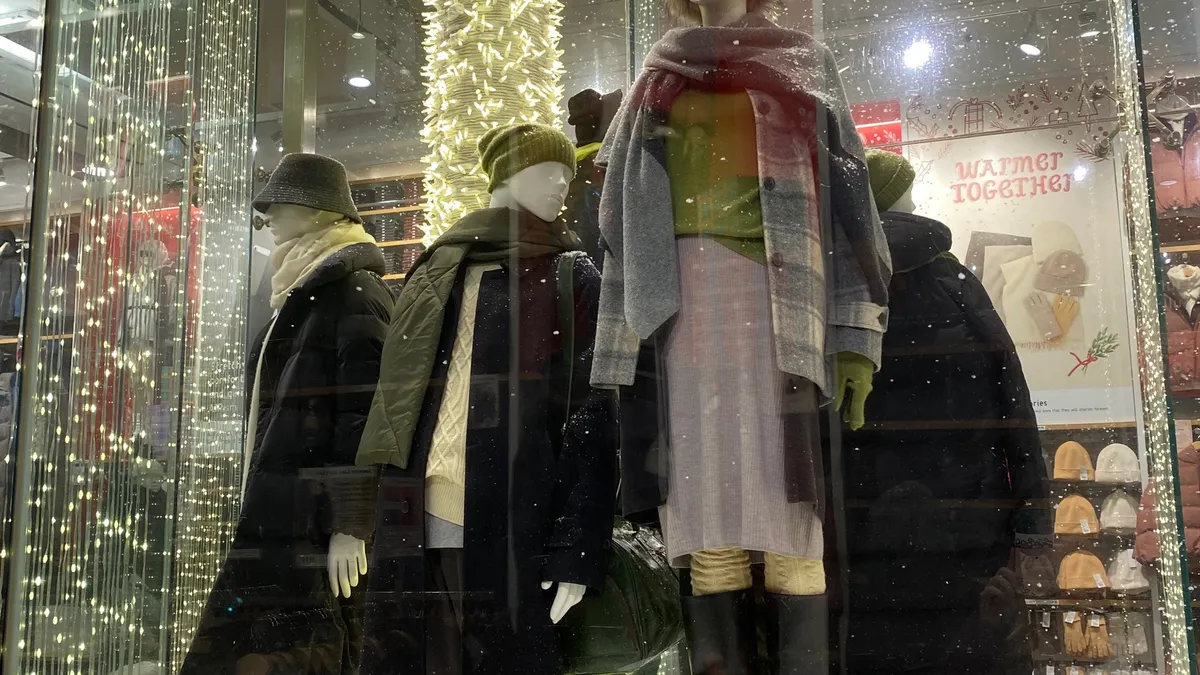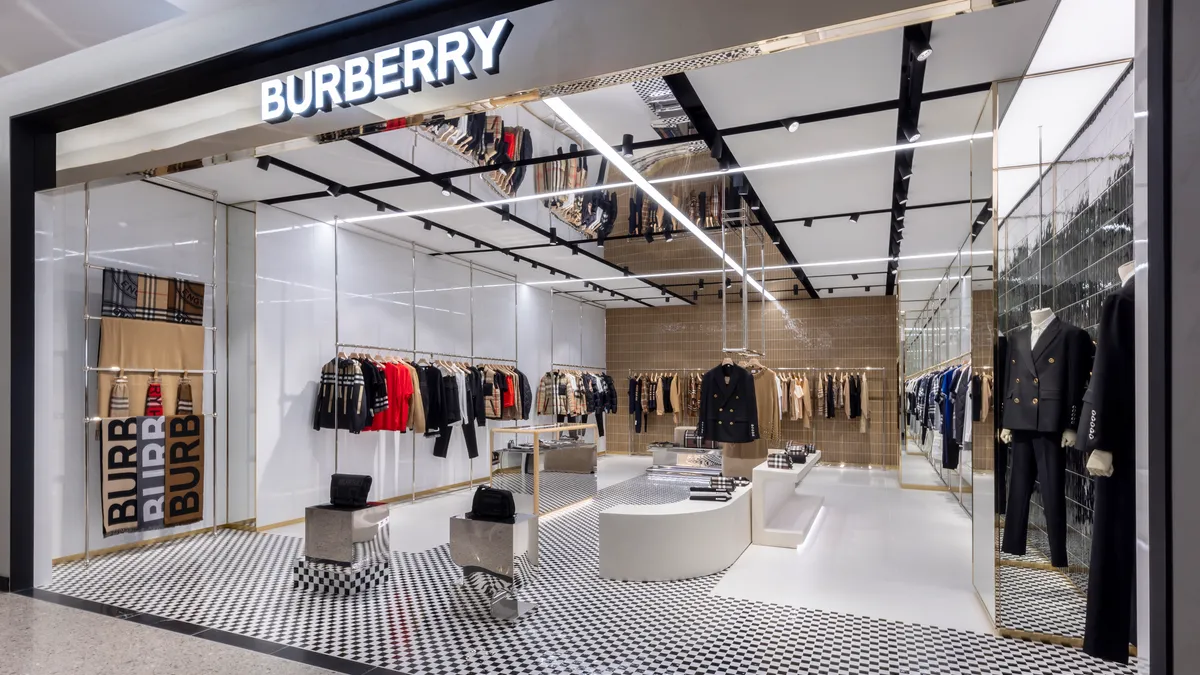The apparel market has declined over the last several years as etiquette has allowed more casual attire for work and special occasions, and as the U.S. middle class has shrunk. Apparel and footwear have grown relatively slowly compared to other categories since at least 2016, and have lost wallet share “for decades,” UBS analysts said in a Dec. 18 research note.
But the segment is getting even tougher, based on consumer surveys conducted by the firm’s Evidence Lab. Many retailers dependent on apparel sales face gloomier prospects than this year’s retail numbers from the government suggest, according to UBS analysts led by Jay Sole.
U.S. consumers' willingness to spend on softgoods like apparel, footwear and accessories in December shrank 15.7% from 2019, the biggest decline since the pandemic began, with a score lower than any other December “since at least 2013,” per the report. The weakness is showing up across all income levels, with even higher-income spending plans down 13.3%.
“U.S. consumers have deferred apparel purchases at a much higher rate than they did one year ago,” Sole wrote, adding that they “are planning to shop for sales more often, buy more store brand products, take fewer shopping trips, and shop closer to home.”
Financial pressure from rising prices has squeezed household budgets, and consumers are expecting more inflation as well as a declining labor market, the analysts said, noting that the percentage of those who say they know someone who was laid off rose to 5% in December from the 4.4% last month. U.S. consumers generally feel less financially secure and that their standard of living deteriorated compared to last year, and those sentiments worsened from November to December.
Uncertainty, which has intensified for consumers and businesses alike throughout the pandemic, may have actually shaped an attitude toward consumption that has been favorable to retailers of late, but that may not last, according to UBS.
“U.S. consumers increasingly say their philosophy of spending is ‘Live for today’ because tomorrow is so uncertain. We believe this trend could have helped boost spending over the [last 12 months],” Sole said. “Taking a step back, this trend concerns us because it implies potential for a big drop-off in spending if consumers' incoming cash flow slows or credit becomes less available or less affordable.”
Department stores take the brunt of it
The situation is especially dire for department stores, where UBS analysts anticipate growth “well below average” and weak profits.
“[W]e believe Department Stores face many challenges ahead,” Sole said. “We model very weak earnings outlooks for Nordstrom, Kohl's and Macy's and believe these challenges are not fully appreciated by the market.”
Furthermore, many specialty and department stores will likely shutter more locations after a year of relatively few closures, UBS said in another research note. In 2020, store closures were rampant. Each quarter between Jan. 1 that year and March 31, 2021, saw some 1,800 stores close on average, according to UBS.
The remaining stores gained share, but the quiet around closures this year has had the opposite effect, they said. The current store count is on pace to be down 1.2% year over year in the fourth quarter, and just 0.3% in the first half of next year.
“We think this is an underappreciated headwind further adding to the [2023] challenges the industry faces from inflation and a potential recession,” Sole said.
Once again, department stores are most at risk, per UBS. From Q4 of 2019 to Q1 of 2021, that segment’s store count fell 33%, but has been flat since, which UBS analysts say “has made sales growth harder to come by” for the likes of Nordstrom and Kohl’s.
The retail segments where footprint expansions are favorable include off price and luxury — both segments competing head to head with department stores.
“We expect Department Stores to close locations as challenges persist,” Sole said.
But brick-and-mortar retailers in general will likely be forced to abandon more locations, not because of a challenge from e-commerce, as many may believe, but as a correction to their late-pandemic reluctance to do so.
“We believe challenging traffic, sales, and margin trends in 2023 will be a catalyst for a store closure rate increase,” Sole said.























